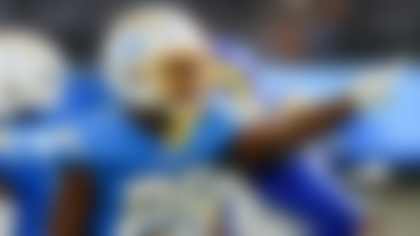By The Associated Press
NEW YORK -- The NFL's chief medical adviser believes the league's player health initiatives will lead to safer conditions for all sports.
Dr. Elizabeth Nabel, hired in February to oversee all the NFL's health and safety committees and endeavors, said Tuesday that "the NFL has a major leadership role nationally to improving the health and safety of players in all sports, and will have a watershed effect on college sports and the NCAA, and on pro sports for men and women."
Nabel, the president of Harvard-affiliated Brigham and Women's Hospital and a professor of medicine at Harvard Medical School, has long been a leader in advocacy for health and broadening access to care.
Among her goals with the NFL: continued focus on medical research, behavioral health, and communicating to the public what the league is doing about player health and safety.
"There's a lot we don't know yet about long-term health and safety issues," Nabel said at a gathering of six NFL medical advisers. "We're just at the beginning of understanding the long-term effects of repetitive head injury, for example.
"I think the NFL has a platform by which it can set safety standards in sports."
The meeting focused on a variety of player health and safety topics ranging from quick recognition, treatment and prevention of head trauma, spine and neck injuries to improving equipment and shoes to cardiovascular issues.
Dr. Russell Lonser of Ohio State's department of neurological surgery, stressed improvements in NFL rules and treatment in significantly helping cut reported concussions. Lonser and Dr. John York, owner of the San Francisco 49ers emphasized the creation of the medical timeout for the 2015 season as another major safety step.
An observer can order the game stopped and a player removed if that player is showings signs of a medical issue, particularly head trauma. Play will resume as soon as the player is removed from the playing field and replaced.
"In the past three years," Lonser noted, "there's been a 25 percent reduction in concussions. And 40 percent reduction in helmet-to-helmet hits."
Dr. Jeff Crandall of University of Virginia cited work to evaluate existing technology and the performance of equipment, both on the field and in labs. For on-field injuries, the league's Head, Neck and Spine Committee and its engineering subcommittee are "trying to characterize the causation scenarios of injuries."
By the end of the 2015 season, they hope to characterize all helmets worn in games, which should lead to conclusions on which helmets are safest — or at least perform and protect the best.
"By using in-depth video clips of players when concussions happened," Crandall said, "we hope to find the biomechanical severities that resulted in the injury."
Nabel, a cardiologist and biomedical researcher, was asked if she had a 7-year-old son, would she allow him to play football.
"Probably," Nabel said, adding that there is no information supporting a minimum age for someone to play the sport.
She recognizes that the public needs to have a better understanding of what the NFL and all football organizations are doing to improve the health and safety aspects of the sport.
"Football is getting safer all the time," Nabel said. "But we have a long ways to go. It's going to be a long, hard journey."
Copyright 2015 The Associated Press



